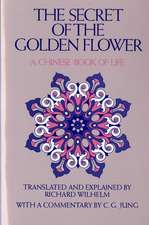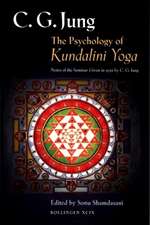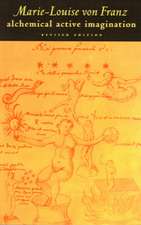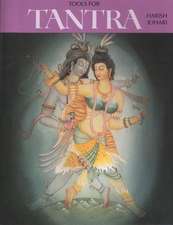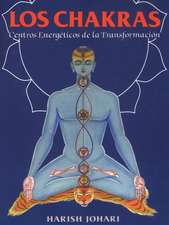The Yoga of Snakes and Arrows: The Leela of Self-Knowledge
Autor Harish Joharien Limba Engleză Paperback – 30 mai 2007
• Comes complete with foldout game board and commentary for the 72 spaces
• Mirrors the path of obstacles and insights one encounters in self-development
• Repeated play offers lessons in self-understanding
Chutes and Ladders, the popular children’s game, is derived from the ancient Hindu game Leela, or Snakes and Arrows, which charts the ups and downs of the soul’s path toward reunion with the Infinite. Snakes and Arrows was designed by the seers and saints of India as a tool for understanding the relationship of the individual self to the Absolute Self. For thousands of years the 72 spaces on this game board have enabled players to chart the paths that represent the course of their lives. Each space represents a virtue or a vice, an aspect of consciousness, or a plane of reality and is accompanied by a commentary explaining its meaning. The player’s progress on the board is dictated by the fall of a die corresponding to the forces of karma. Repeated encounters with the snakes and arrows on the board reveal the full meaning of the commentaries and can give shape to habitual patterns of the player, resulting in greater self-understanding and even a gradual detachment from the ego’s delusions.
The Yoga of Snakes and Arrows assists the seeker through the stages and trials of self-development, mirroring both the obstacles of karma and the rewards of self-obtained insight. There is really only one game in life and that is Leela, the game of self-knowledge and the universal play of cosmic energies.
Preț: 65.97 lei
Preț vechi: 94.87 lei
-30% Nou
Puncte Express: 99
Preț estimativ în valută:
12.62€ • 13.18$ • 10.45£
12.62€ • 13.18$ • 10.45£
Carte disponibilă
Livrare economică 14-26 martie
Preluare comenzi: 021 569.72.76
Specificații
ISBN-13: 9781594771781
ISBN-10: 1594771782
Pagini: 144
Ilustrații: 8 b&w illustrations
Dimensiuni: 152 x 229 x 13 mm
Greutate: 0.27 kg
Ediția:3rd Edition, New Edition of Leela: The Game of Self-Knowledge
Editura: Inner Traditions/Bear & Company
Colecția Destiny Books
Locul publicării:United States
ISBN-10: 1594771782
Pagini: 144
Ilustrații: 8 b&w illustrations
Dimensiuni: 152 x 229 x 13 mm
Greutate: 0.27 kg
Ediția:3rd Edition, New Edition of Leela: The Game of Self-Knowledge
Editura: Inner Traditions/Bear & Company
Colecția Destiny Books
Locul publicării:United States
Notă biografică
Harish Johari (1934-1999) was a respected teacher, artist, and composer who studied with many of the great saints of India. He worked for decades to introduce the culture of his homeland to the West and authored 12 books on Eastern spirituality, including Breath, Mind, and Consciousness; Chakras; Ayurvedic Healing Cuisine; The Healing Power of Gemstones; Numerology; and Tools for Tantra.
Extras
from Chapter 6
Third Row: The Theater of Karma
19
Plane of karma
(karma-loka)
This, the plane of action, begins the third row of the game and the exploration of the third chakra. The only desire that remains true for all times and places is the desire for fulfillment. All other desires are manifestations of that one desire: the desire for completion, for self-realization. So on whatever level the player vibrates, on that level does he seek fulfillment.
In the first and second chakras the desire was manifested as the pursuit of money and sex. In the third chakra the dominant concern becomes identification of the ego and achievement of power. First-chakra people work neither for themselves nor on themselves. They are usually employed in aiding the fulfillment of some third-chakra person. In the second chakra, desire flows in the direction of the senses, and the exploration of the sensual realm consumes the energy. It is in the third chakra that the player becomes conscious of the social and political influences on the development of his personality. Thus the player becomes self-conscious. Egotism becomes the impetus of action, as the ego seeks to extend its influence in ever-broadening circles. In this fashion karma-loka makes one face reality from a more realistic perspective. Second- chakra fantasies fall before the practicalities of the world. It is a moment of sobriety. At this point one becomes aware of the law of karma.
Each thing is in a constant state of interaction with all other things. On the level of energy, karma determines the frequency of vibration, which on the gross level is manifested as the player’s behavior patterns. Karma is the cause of the cycle of birth and rebirth. And karma alone can win for the player liberation from the cycle, creating both bondage and liberation.
Basically, the player has karmic responsibility for his self. This self can be divided into manifested and unmanifested, body and being. So there are karmas toward the body and karmas toward consciousness. Body is world: body contains all the elements of gross manifestation. So karmas toward the body are karmas toward the whole world. Consciousness is the essence of the world; so karmas toward consciousness also cover the whole world.
20
Charity
(daan)
Those karmas which raise the vibrational level are known as virtues; those which lower it are vices. Charity is a human virtue that exists on the third-chakra level. It lifts the player above the problems of the third chakra and transports him to the fourth level of the game, the plane of balance.
As a virtue, charity is a manifestation of the Divinity, which is the essence of consciousness. When the player lands on this square, he identifies with the Divinity--present in all--and performs acts of charity without desiring any personal benefit from his karma.
A feeling of elation is experienced during the performance of the act of charity. This is the raising of energy from a lower level to a higher one. That is why all human religions have stressed the significance of charity and included charitable acts in their rituals. The reality of need and the desire to share are the two factors at work at the base of the game. Charity satisfies the developing ego and breaks the bondage of third chakra.
Charity is one of the most important pillars of the plane of karma. It is the motivating force behind man’s highest institutionalized activities--the mergence of compassion with the third-chakra penchant for organization.
21
Atonement
(saman paap)
When the player has risen above the press of material and sensual desires, he gains the awareness that in the course of gratifying his lower needs he has caused harm to others. He has acted blindly in his search for fulfillment, without awareness of the consequences of his actions. When he lands on the plane of atonement he sees that by the use of wrong actions and wrong means he has created wrong vibrations within himself, which prevent the attainment of inner peace.
In search of that inner peace he lands in atonement to make up for the wrongs he has done, to make up for errors in conduct, to atone for his follies. It is a time of great emotional turmoil. There is a keen and pressing desire to rectify the negative karmas, the vices he has entertained.
Atonement is also the square for second-chakra personalities who have landed in the third chakra and feel guilty for their inability to adjust to vibrating at a higher level. In both cases, atonement produces positive results and helps in the upward flow of energy. The player atones by following the law of dharma, which is the true nature of everything. Atonement puts one in tune with dharma--which is the next square of the game.
22
Plane of dharma
(dharma-loka)
Dharma is whatever is right. Dharma is an ever-evolving, ever-flowing principle. Dharma is an atemporal, aspatial force working in human existence. Dharma is constant, but its form varies from situation to situation. It lives in the depths of reality. The player who finds the stream of dharma dwells in reality and becomes at one with it (at-one-ment follows atonement).
Conscious action is dharma--conscious action in accord with the reality of the moment. Learning to act consciously is learning to act in accord with the principles of the cosmos. So dharma is that action which accords with cosmic knowledge.
There are ten signposts of dharma: firmness, forgiveness, self-command, restraint (nonstealing), cleanliness (purity), control of the sensory and work organs, intellect, right knowledge, truth, and absence of anger.
There is no dharma like doing good for others. There is no adharma, vice, worse than causing harm to another. Dharma can best be understood when related to conduct. Yet it is far more than a code of conduct, of morality and ethics. These are attributes of dharma but not all of dharma. Ethics is a reflection of dharma, not dharma itself.
Third Row: The Theater of Karma
19
Plane of karma
(karma-loka)
This, the plane of action, begins the third row of the game and the exploration of the third chakra. The only desire that remains true for all times and places is the desire for fulfillment. All other desires are manifestations of that one desire: the desire for completion, for self-realization. So on whatever level the player vibrates, on that level does he seek fulfillment.
In the first and second chakras the desire was manifested as the pursuit of money and sex. In the third chakra the dominant concern becomes identification of the ego and achievement of power. First-chakra people work neither for themselves nor on themselves. They are usually employed in aiding the fulfillment of some third-chakra person. In the second chakra, desire flows in the direction of the senses, and the exploration of the sensual realm consumes the energy. It is in the third chakra that the player becomes conscious of the social and political influences on the development of his personality. Thus the player becomes self-conscious. Egotism becomes the impetus of action, as the ego seeks to extend its influence in ever-broadening circles. In this fashion karma-loka makes one face reality from a more realistic perspective. Second- chakra fantasies fall before the practicalities of the world. It is a moment of sobriety. At this point one becomes aware of the law of karma.
Each thing is in a constant state of interaction with all other things. On the level of energy, karma determines the frequency of vibration, which on the gross level is manifested as the player’s behavior patterns. Karma is the cause of the cycle of birth and rebirth. And karma alone can win for the player liberation from the cycle, creating both bondage and liberation.
Basically, the player has karmic responsibility for his self. This self can be divided into manifested and unmanifested, body and being. So there are karmas toward the body and karmas toward consciousness. Body is world: body contains all the elements of gross manifestation. So karmas toward the body are karmas toward the whole world. Consciousness is the essence of the world; so karmas toward consciousness also cover the whole world.
20
Charity
(daan)
Those karmas which raise the vibrational level are known as virtues; those which lower it are vices. Charity is a human virtue that exists on the third-chakra level. It lifts the player above the problems of the third chakra and transports him to the fourth level of the game, the plane of balance.
As a virtue, charity is a manifestation of the Divinity, which is the essence of consciousness. When the player lands on this square, he identifies with the Divinity--present in all--and performs acts of charity without desiring any personal benefit from his karma.
A feeling of elation is experienced during the performance of the act of charity. This is the raising of energy from a lower level to a higher one. That is why all human religions have stressed the significance of charity and included charitable acts in their rituals. The reality of need and the desire to share are the two factors at work at the base of the game. Charity satisfies the developing ego and breaks the bondage of third chakra.
Charity is one of the most important pillars of the plane of karma. It is the motivating force behind man’s highest institutionalized activities--the mergence of compassion with the third-chakra penchant for organization.
21
Atonement
(saman paap)
When the player has risen above the press of material and sensual desires, he gains the awareness that in the course of gratifying his lower needs he has caused harm to others. He has acted blindly in his search for fulfillment, without awareness of the consequences of his actions. When he lands on the plane of atonement he sees that by the use of wrong actions and wrong means he has created wrong vibrations within himself, which prevent the attainment of inner peace.
In search of that inner peace he lands in atonement to make up for the wrongs he has done, to make up for errors in conduct, to atone for his follies. It is a time of great emotional turmoil. There is a keen and pressing desire to rectify the negative karmas, the vices he has entertained.
Atonement is also the square for second-chakra personalities who have landed in the third chakra and feel guilty for their inability to adjust to vibrating at a higher level. In both cases, atonement produces positive results and helps in the upward flow of energy. The player atones by following the law of dharma, which is the true nature of everything. Atonement puts one in tune with dharma--which is the next square of the game.
22
Plane of dharma
(dharma-loka)
Dharma is whatever is right. Dharma is an ever-evolving, ever-flowing principle. Dharma is an atemporal, aspatial force working in human existence. Dharma is constant, but its form varies from situation to situation. It lives in the depths of reality. The player who finds the stream of dharma dwells in reality and becomes at one with it (at-one-ment follows atonement).
Conscious action is dharma--conscious action in accord with the reality of the moment. Learning to act consciously is learning to act in accord with the principles of the cosmos. So dharma is that action which accords with cosmic knowledge.
There are ten signposts of dharma: firmness, forgiveness, self-command, restraint (nonstealing), cleanliness (purity), control of the sensory and work organs, intellect, right knowledge, truth, and absence of anger.
There is no dharma like doing good for others. There is no adharma, vice, worse than causing harm to another. Dharma can best be understood when related to conduct. Yet it is far more than a code of conduct, of morality and ethics. These are attributes of dharma but not all of dharma. Ethics is a reflection of dharma, not dharma itself.
Cuprins
Preface
Introduction
1 Rules of Play
2 Meaning of the Game
3 Numerology of the Game
The Commentaries
4 First Row: The Fundamentals of Being
1. Genesis (janma)
2. Illusion (maya)
3. Anger (krodh)
4. Greed (lobh)
5. Physical plane (bhu-loka)
6. Delusion (moha)
7. Conceit (mada)
8. Avarice (matsar or matsarya)
9. Sensual plane (kama-loka)
5 Second Row: The Realm of Fantasy
10. Purification (shuddhi)
11. Entertainment (gandharvas)
12. Envy (eirsha)
13. Nullity (antariksha)
14. Astral plane (bhuvar-loka)
15. Plane of fantasy (naga-loka)
16. Jealousy (dwesh)
17. Mercy (daya)
18. Plane of joy (harsha-loka)
6 Third Row: The Theater of Karma
19. Plane of action (karma-loka)
20. Charity (daan)
21. Atonement (saman paap)
22. Plane of dharma (dharma-loka)
23. Celestial plane (swarga-loka)
24. Bad company (ku-sang-loka)
25. Good company (su-sang-loka)
26. Sorrow (dukh)
27. Selfless service (parmarth)
7 Fourth Row: Attaining Balance
28. Apt religion (sudharma)
29. Irreligiosity (adharma)
30. Good tendencies (uttam gati)
31. Plane of sanctity (yaksha-loka)
32. Plane of balance (maha- or mahar-loka)
33. Plane of fragrance (gandha-loka)
34. Plane of taste (rasa-loka)
35. Purgatory (narka-loka)
36. Clarity of consciousness (swatch)
8 Fifth Row: Man Becomes Himself
37. True awareness (gyana; traditionally, jnana)
38. Plane of life energy (prana-loka)
39. Plane of elimination (apana-loka)
40. Plane of circulation (vyana-loka)
41. Human plane (jana-loka)
42. Plane of fire (Agni-loka)
43. Birth of man (manushya-janma)
44. Ignorance (avidya)
45. Right knowledge (suvidya)
9 Sixth Row: The Time of Penance
46. Conscience (vivek)
47. Plane of neutrality (Saraswati)
48. Solar plane (Yamuna)
49. Lunar plane (Ganges or Ganga)
50. Plane of austerity (tapa- or tapar-loka)
51. Earth (prithvi)
52. Plane of violence (himsa-loka)
53. Liquid plane (jala-loka)
54. Spiritual devotion (bhakti-loka)
10 Seventh Row: The Plane of Reality
55. Egotism (ahamkara)
56. Plane of primal vibrations (Omkar)
57. Gaseous plane (vayu-loka)
58. Plane of radiation (teja-loka)
59. Plane of reality (satya-loka)
60. Positive intellect (subuddhi)
61. Negative intellect (durbuddhi)
62. Happiness (sukh)
63. Darkness (tamas)
11 Eighth Row: The Gods Themselves
64. Phenomenal plane (prakriti-loka)
65. Plane of inner space (uranta-loka)
66. Plane of bliss (ananda-loka)
67. Plane of cosmic good (Rudra-loka)
68. Cosmic Consciousness (Vaikuntha-loka)
69. Absolute plane (Brahma-loka)
70. True nature (satoguna)
71. Activity (rajoguna)
72. Inertia (tamoguna)
Further Reading
Introduction
1 Rules of Play
2 Meaning of the Game
3 Numerology of the Game
The Commentaries
4 First Row: The Fundamentals of Being
1. Genesis (janma)
2. Illusion (maya)
3. Anger (krodh)
4. Greed (lobh)
5. Physical plane (bhu-loka)
6. Delusion (moha)
7. Conceit (mada)
8. Avarice (matsar or matsarya)
9. Sensual plane (kama-loka)
5 Second Row: The Realm of Fantasy
10. Purification (shuddhi)
11. Entertainment (gandharvas)
12. Envy (eirsha)
13. Nullity (antariksha)
14. Astral plane (bhuvar-loka)
15. Plane of fantasy (naga-loka)
16. Jealousy (dwesh)
17. Mercy (daya)
18. Plane of joy (harsha-loka)
6 Third Row: The Theater of Karma
19. Plane of action (karma-loka)
20. Charity (daan)
21. Atonement (saman paap)
22. Plane of dharma (dharma-loka)
23. Celestial plane (swarga-loka)
24. Bad company (ku-sang-loka)
25. Good company (su-sang-loka)
26. Sorrow (dukh)
27. Selfless service (parmarth)
7 Fourth Row: Attaining Balance
28. Apt religion (sudharma)
29. Irreligiosity (adharma)
30. Good tendencies (uttam gati)
31. Plane of sanctity (yaksha-loka)
32. Plane of balance (maha- or mahar-loka)
33. Plane of fragrance (gandha-loka)
34. Plane of taste (rasa-loka)
35. Purgatory (narka-loka)
36. Clarity of consciousness (swatch)
8 Fifth Row: Man Becomes Himself
37. True awareness (gyana; traditionally, jnana)
38. Plane of life energy (prana-loka)
39. Plane of elimination (apana-loka)
40. Plane of circulation (vyana-loka)
41. Human plane (jana-loka)
42. Plane of fire (Agni-loka)
43. Birth of man (manushya-janma)
44. Ignorance (avidya)
45. Right knowledge (suvidya)
9 Sixth Row: The Time of Penance
46. Conscience (vivek)
47. Plane of neutrality (Saraswati)
48. Solar plane (Yamuna)
49. Lunar plane (Ganges or Ganga)
50. Plane of austerity (tapa- or tapar-loka)
51. Earth (prithvi)
52. Plane of violence (himsa-loka)
53. Liquid plane (jala-loka)
54. Spiritual devotion (bhakti-loka)
10 Seventh Row: The Plane of Reality
55. Egotism (ahamkara)
56. Plane of primal vibrations (Omkar)
57. Gaseous plane (vayu-loka)
58. Plane of radiation (teja-loka)
59. Plane of reality (satya-loka)
60. Positive intellect (subuddhi)
61. Negative intellect (durbuddhi)
62. Happiness (sukh)
63. Darkness (tamas)
11 Eighth Row: The Gods Themselves
64. Phenomenal plane (prakriti-loka)
65. Plane of inner space (uranta-loka)
66. Plane of bliss (ananda-loka)
67. Plane of cosmic good (Rudra-loka)
68. Cosmic Consciousness (Vaikuntha-loka)
69. Absolute plane (Brahma-loka)
70. True nature (satoguna)
71. Activity (rajoguna)
72. Inertia (tamoguna)
Further Reading
Recenzii
"Leela is both a boardgame and practice on the spiritual path. The game is an analog to the spiritual journey. Following the roll of the die (which represents karma), the player advances along the path toward liberation of the soul."
"Without a doubt, many hours of enjoyment and learning for anyone on the path."
"The late master of Vajrayana and Ayurveda, Johari is yet again demonstrating his vast mastery of the manifolded arts that lead to the revelation of self and purpose."
"Without a doubt, many hours of enjoyment and learning for anyone on the path."
"The late master of Vajrayana and Ayurveda, Johari is yet again demonstrating his vast mastery of the manifolded arts that lead to the revelation of self and purpose."
Descriere
A guide to observation of the inner self through the ancient Indian game of Leela.





